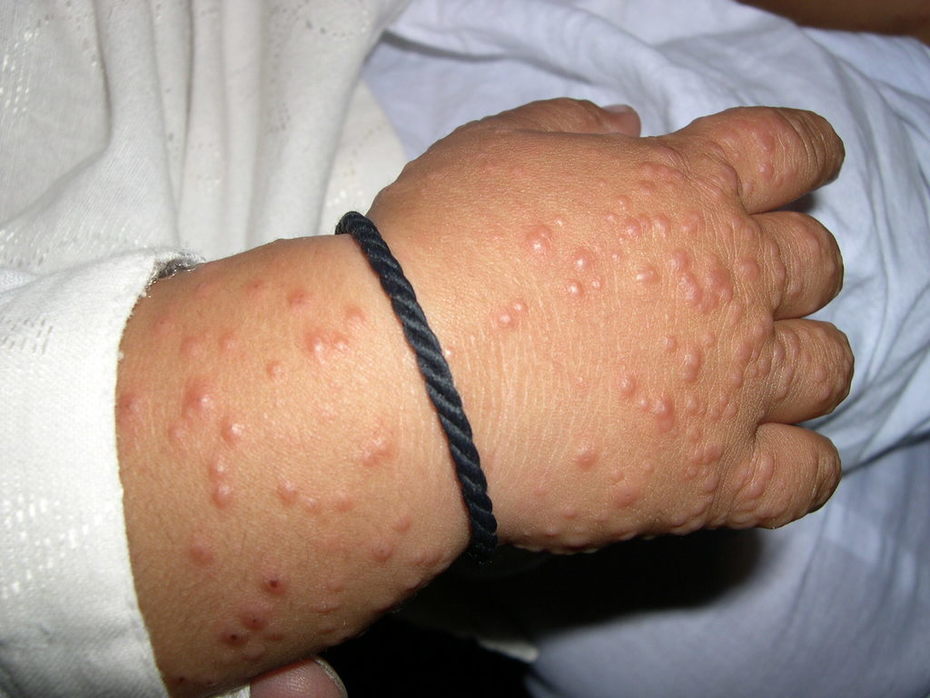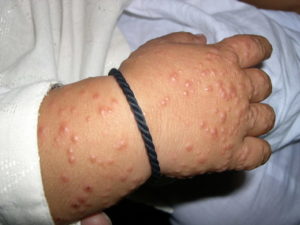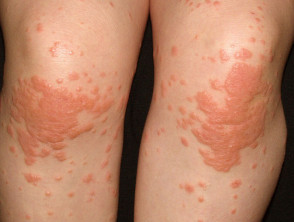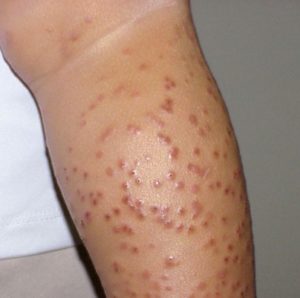

Gianotti-Crosti syndrome (Papular acrodermatitis of childhood) is a characteristic response of the skin to viral infection in which there is a papular rash that lasts for several weeks.
It mainly affects children between the ages of 6 months and 12 years. However, it has rarely been described in adults.
Causes
The specific viruses causing Gianotti-Crosti syndrome may include:
- Hepatitis B infection
- Epstein Barr virus
- Cytomegalovirus
- Enterovirus infections
- Echoviruses
- Respiratory syncytial virus.
Vaccination has also occasionally been associated with the onset of Gianotti-Crosti syndrome.
Clinical features


Gianotti-Crosti syndrome presents over the course of 3 or 4 days. A profuse eruption of dull red spots develops first on the thighs and buttocks, then on the outer aspects of the arms, and finally on the face.
The individual spots are 5–10 mm in diameter and are a deep red colour. Later they often look purple, especially on the legs, due to leakage of blood from the capillaries. They may develop fluid-filled blisters (vesicles). Gianotti-Crosti syndrome is not usually itchy.
The child with this syndrome may feel quite well or have a mild temperature. Mildly enlarged lymph nodes in the armpits and groins may persist for months. When Gianotti-Crosti syndrome is caused by hepatitis B, there may be an enlarged liver, but there is seldom any jaundice.
Treatment
There is no specific treatment for Gianotti-Crosti syndrome. It fades in 2–8 weeks with mild scaling. Recurrence is unlikely but has been reported.
If hepatitis B is present, the liver takes between 6 months and 4 years to fully recover. Sometimes there is persistent hepatitis and persistent viral infection.